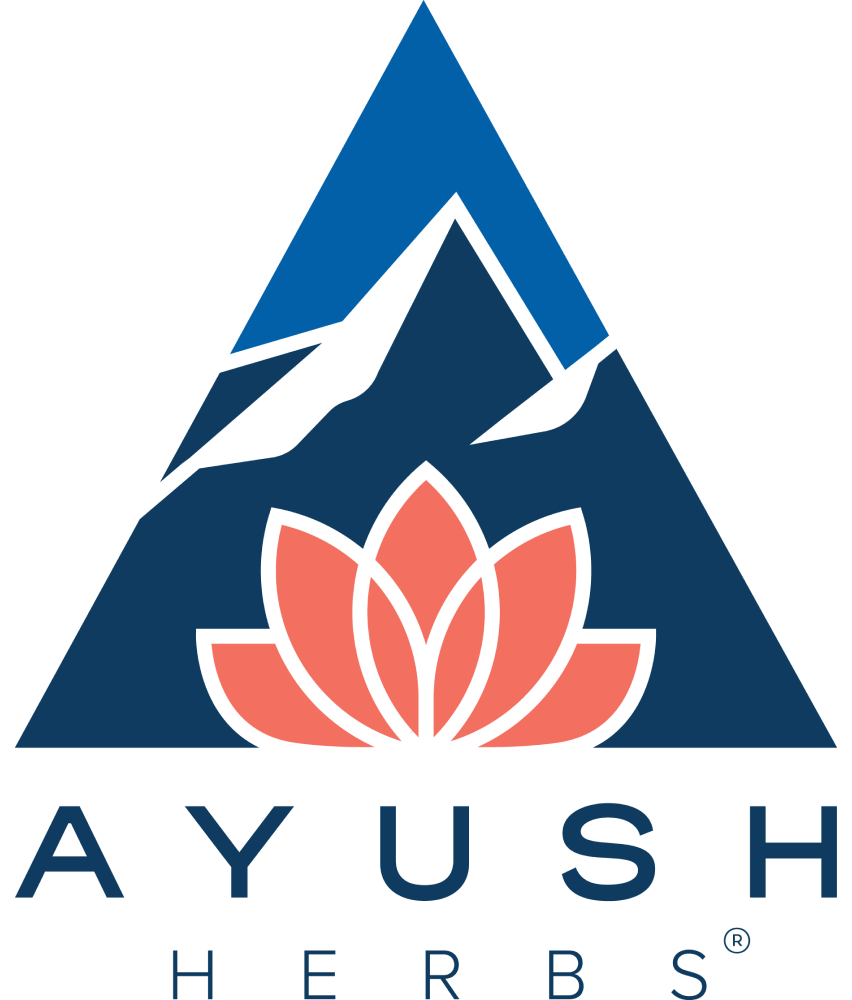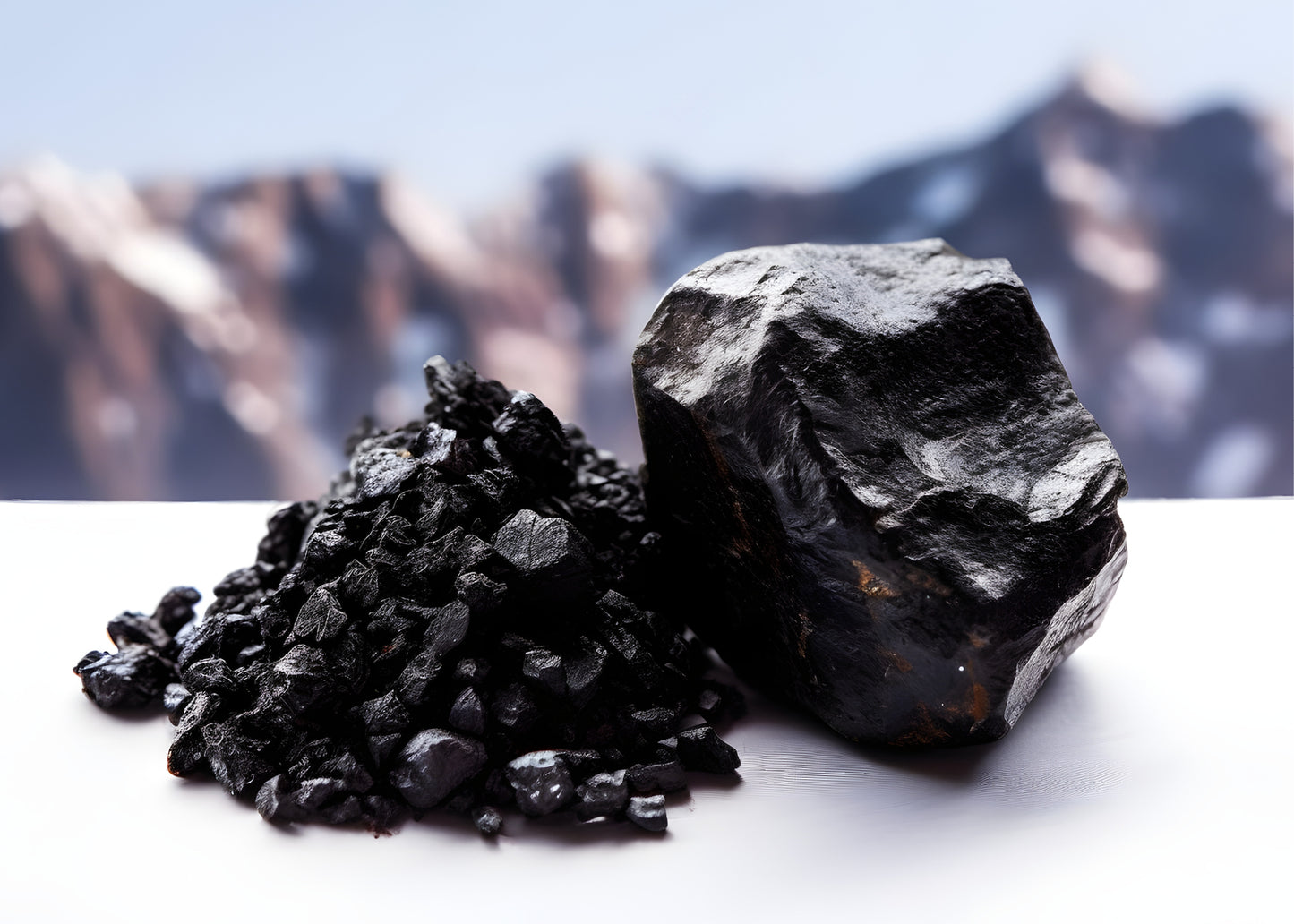In India, there is a substance that is harvested as it exuded from the Himalayan mountains and traditional beliefs tell of its ability to restore life, reverse aging, and promote fertility. It is even said that in the Hindu faith this substance is the lifeforce of the deity, Shiva. Its name, Shilajit, is composed of the words Shila meaning rock, and Jit meaning “to have won.” Therefore, it is commonly translated as “the conqueror of the rock1,” a potential reference to its ability to allay altitude sickness. Since its discovery and induction into the Ayurvedic materia medica, Shilajit has been utilized extensively for all sorts of Ayurvedic concerns. Beyond India and the Himalayan mountains, Shilajit has been used by multiple cultures around the world. Shilajit, is also known as Mumie or Mimiyo in Russian, Urdu in Pakistani, and Brag Zhun in Tibetan. This is because Shilajit has been found to be naturally occurring in the Altai Mountains, Caucasus Mountains, Pamir Mountains, Andes mountains, and other areas with similar geological formations2. What unites these vast cultures and their use of Shilajit is the shared use of it as a rejuvenating and energizing formula. Today, while some of its mythic fanfare has died down over the centuries, there is a renewed interest, especially worldwide, at just what this black mineral pitch can do.
So, what exactly is Shilajit? It is a complex mixture of humic, fulvic, and benzoic acids and compressed plant matter containing alkaloids, phenolics, essential oils, as well as a host of minerals3. It is exuded from stone along fracture points in the rock and interestingly, its exact genesis is not agreed upon by scientists. Some believe that it is formed from the melting of rock and metals which in turn absorb fossilized plant matter. Meanwhile another hypothesis states that it is derived from ancient marine life that has liquified under pressure. A third theory suggests that due to the high humic acid content and the understood rules of decay in archaeology, that Shilajit is botanical in origin, and through geologic activity of heat and pressure, the ancient plant matter is then liquified and oozes out along fracture points within the mountains.3 It becomes no wonder such a unique and mysterious substance garners such lore and interest.
It is rare that modern medicine understands a historical medicine better than the historians and archeologists that research it; however, this is the case with Shilajit. Human trials support its efficacy in promoting testosterone and increasing sperm quantity and quality in men. In one trial of 96 healthy males aged 45 to 55 years, given 250mg of Shilajit twice a day (500mg per day) for 90 days saw increases in total testosterone, free testosterone and dehydroepiandrosterone (DHEAS) when compared with placebo4. It appears that the traditional use as a sexual stimulant and male health tonic still stands up to this day, not dissimilar to the mountains of the Himalayas that Shilajit is derived from.
Another traditional use of Shilajit, as the conqueror of the mountain, is its ability to support energy levels, and to promote vitality in all its forms. Once again, this was put to the test with 63 recreationally active, healthy, men being split into three groups: placebo, high dose Shilajit (500mg per day), or low dose Shilajit (250mg per day). They were assessed for maximal voluntary isometric contraction (MVIC) strength, concentric peak torque, fatigue-induced percent decline in strength, and serum hydroxyproline (HYP), a product of the breakdown of muscle collagen after periods of intense exercise, at baseline, and again after 8 weeks of supplementation. Interestingly, muscular strength was retained and improved in the high dose group, while the low dose group was indistinguishable from placebo5. These results are useful in two ways: firstly they establish once again that the traditional use of Shilajit as an energy supplement is valid, and secondly they demonstrate a dose response curve, which is also useful for supplement strategies. Similarly, ashwagandha has gained much notoriety for very similar effects including trials in healthy individuals demonstrating improvements in testosterone levels6, improved cardiopulmonary exercise recovery7, as well as weight training8. These overlapping actions have not been adequately studied in concert with one another; however, it certainly is a worthwhile question to wonder if these two supplements have potentially additive effects.
Shilajit is a mysterious product with mysterious origins. While this may have played a role in its mythology and popularity in ancient times, the stories told about it have carried forward to this day. Moreover, science has already validated several of its purported uses and it seems that it may only be a matter of time before more uses are elucidated in the literature. It maintains its title as Mountain Conqueror, but what other uses lie within? For now, its many unstudied uses will remain a mystery much like Shilajit itself.
__________
Sources
1. Agarwal, S. P., Khanna, R., Karmarkar, R., Anwer, M. K., & Khar, R. K. (2007). Shilajit: a review. Phytotherapy research : PTR, 21(5), 401–405.
2. Carrasco-Gallardo, C., Guzmán, L., & Maccioni, R. B. (2012). Shilajit: a natural phytocomplex with potential procognitive activity. International journal of Alzheimer's disease, 2012, 674142.
3. Ding, R., Zhao, M., Fan, J., Hu, X., Wang, M., Zhong, S., & Gu, R. (2020). Mechanisms of generation and exudation of Tibetan medicine Shilajit (Zhaxun). Chinese medicine, 15, 65.
4. Pandit, S., Biswas, S., Jana, U., De, R. K., Mukhopadhyay, S. C., & Biswas, T. K. (2016). Clinical evaluation of purified Shilajit on testosterone levels in healthy volunteers. Andrologia, 48(5), 570–575.
5. Keller, J. L., Housh, T. J., Hill, E. C., Smith, C. M., Schmidt, R. J., & Johnson, G. O. (2019). The effects of Shilajit supplementation on fatigue-induced decreases in muscular strength and serum hydroxyproline levels. Journal of the International Society of Sports Nutrition, 16(1), 3.
6. Smith, S. J., Lopresti, A. L., Teo, S. Y. M., & Fairchild, T. J. (2021). Examining the Effects of Herbs on Testosterone Concentrations in Men: A Systematic Review. Advances in nutrition (Bethesda, Md.), 12(3), 744–765.
7. Tiwari, S., Gupta, S. K., & Pathak, A. K. (2021). A double-blind, randomized, placebo-controlled trial on the effect of Ashwagandha (Withania somnifera dunal.) root extract in improving cardiorespiratory endurance and recovery in healthy athletic adults. Journal of ethnopharmacology, 272, 113929.
8. Wankhede, S., Langade, D., Joshi, K., Sinha, S. R., & Bhattacharyya, S. (2015). Examining the effect of Withania somnifera supplementation on muscle strength and recovery: a randomized controlled trial. Journal of the International Society of Sports Nutrition, 12, 43.

